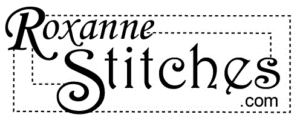Hi Everyone! It’s Monday and that means it’s time for more Questions from You and Answers from Me.

You Asked:
I love top stitching on my garment projects, however it always looks a little “home made”. How do I make my top stitching look more professional?
Using a heavier weight thread with a longer stitch length can make your top stitching look more professional. This combination will make the stitches stand out and sit on top of the fabric instead of small stitches sinking down into the fibers of the fabric. This stitching looks particularly nice with a contrasting color thread. You can also thread your machine with 2 threads and use a double needle. This will ensure your stitches are perfectly parallel to one another which looks very professional.
You Asked:
How often should I be changing my sewing machine needle?
There’s always a great debate on how frequently to change your sewing machine needles. Frankly, that’s a question that can only be answered by you. Ask yourself a few questions if you’re unsure?
How much did I sew with this needle on my project?
Did the needle perform well or did it skip stitches?
Is this the same type of needle I need for my next project?
My personal feeling is that needles aren’t very expensive, so I will change a needle and discard it after each project. I don’t ever want to risk damage to my machine with a slightly bent needle or a dull needle. As I said, it’s a personal preference. For more information about needles, here’s a video and blog post with more details: Sewing Machine Needles ~ Video Part 9
You Asked:
I finally have a TNT pants pattern that I’m satisfied with. I used a denim with lots of stretch for fitting the pattern. When using other fabrics with less stretch, the pattern needs adjusting again. What can I do to avoid this?
Congratulations on achieving a TNT pants pattern. That’s like the “Holy Grail” to those of us that work towards that goal. Unfortunately, by using a fabrication with a large amount of stretch and if the pattern is more fitted, you will need to adjust the pattern to use fabrications with less or no stretch. In this case, since you’re satisfied with your TNT pattern, keep that pattern for use with fabrications with the most amount of stretch. I would suggest making another TNT pattern based on your original TNT pattern for use with fabrications with less stretch. For those of you that are working towards a TNT pants pattern, be aware of the fabrications you select when fitting your pattern.
Thanks again for all the kind support of my new blog feature! Please keep all the great questions coming.

DISCLAIMER: All of my advice is given as my own opinion from my professional experience as a Fashion Designer, Textile Drafter, and Production Pattern Maker. Keep in mind that there’s more than one way to approach any sewing technique, sewing equipment, or construction process.

I didn't know about the sewing machine needle! Up until now I've always just used it until it broke, lol.
Great tip with the top stitching! I always hate the "homemade" appearance, I'll have to keep this one in mind.
I haven't sewn in a while, but back when I did sew here and there I never thought to change the needle! I always had extras on-hand, which makes me feel even sillier for never doing it.
How often to change the sewing needle, I never thought of that! I also think it depends on the fabric you stitched, tough ones tend to blunt it.
Hi Merrissa. It's not a good thing for your needle to break while sewing. Needles degrade while sewing and need to be changed. If a needle breaks while sewing, it can not only cause damage to your machine, it can also damage your eyes or anything else it may hit.
Thanks Elise. Glad you found my top stitching tips helpful.
Hi Jazmin. Don't feel silly. Changing sewing machine needles is one of those things we don't always think of.
Hi Nicolette. Yes, it depends on the fabrication you're stitching also. One size, doesn't fit all.